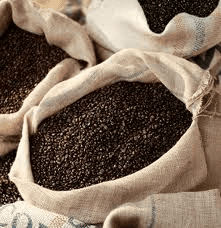 Viet Nam has exported 14.24 million sacks of coffee, or 955 million tonnes, in the last 10 years – 91 per cent of total production. Exports dropped 17 per cent last year compared to 2009, but have risen in 2011. The price has also soared. Reporter Bich Ngoc spoke to Luong Van Tu, chairman of the Viet Nam Coffee and Cocoa Association, about plans to boost coffee production and profits.
Viet Nam has exported 14.24 million sacks of coffee, or 955 million tonnes, in the last 10 years – 91 per cent of total production. Exports dropped 17 per cent last year compared to 2009, but have risen in 2011. The price has also soared. Reporter Bich Ngoc spoke to Luong Van Tu, chairman of the Viet Nam Coffee and Cocoa Association, about plans to boost coffee production and profits.
How is the coffee industry doing this year?
Coffee prices this year are at a 13-year high. The Free on Board (FOB) price topped US$2,500 per tonne, averaging $2,200-2,300 per tonne in the first six months.
As of July, Viet Nam exported 900,000 tonnes, worth a turnover of $2 billion – 24 per cent up in terms of quantity and 92.6 per cent in value over the same period last year.
We expect to reach an annual export turnover of $2.5 billion.
Green coffee exports this year were better than the previous crop but have room for considerable growth. We must focus more on processing. The association has asked the Government to draw out a plan to boost investment in the processing sector in the 2015-2020 period. As profit mainly lies in roasting and processing coffee the percentage of processed coffee must reach 20-25 per cent over the next 10-15 years.
So what should be done to help businesses boost trade?
Oil is the most heavily traded commodity worldwide, followed by coffee. Up to 98 per cent of the world’s coffee contracts are traded at commodity exchanges.
Meanwhile, Viet Nam is the second largest coffee producer in the world. The formation of a commodity trading market for coffee is inevitable. It would help compensate for the risks of arbitrage (The purchase of securities on one market for immediate resale on another market in order to profit from a price discrepancy).
In fact, Vietnamese coffee makers have been trading their products in London for a long time. A systematic commodity market would connect Viet Nam’s coffee trading with the region and the world.
What is the current structure of the industry?
Concentrated coffee production in the country accounts for just 10 per cent of the total. The rest involves household businesses.
In addition, most households have a maximum cultivated area of only 2 ha. To invest in technology in small-scale production is difficult.
Meanwhile, we do have a lot of coffee exporters – nearly 150 companies. These companies then sell harvested coffee to about 20 foreign companies, which currently have representative offices in Viet Nam.
These 20 foreign enterprises sell Vietnamese coffee to just eight roasters in the world. There are lots of sellers but a limited number of buyers. Thus, Vietnamese producers are helping to make prices slide. Unlike Viet Nam, Indonesia for example has only five large coffee processors.
Coffee prices have been declining sharply for more than two months, although prices remain high compared to the same period last year. Specifically, coffee prices in July fell 16 per cent compared to the previous month. In addition to investors’ profit-taking, US economic stimulus measures will push the dollar rate higher.
What strategy should be adopted to promote Vietnamese coffee?
There are only three major coffee brands in Viet Nam – Vinacafe Bien Hoa, Trung Nguyen and Nestle’s Cafe Viet. The association is helping promote these brands.
The new law on food safety, which took effect on July 1, will help businesses improve quality. I think quality coffee should also be promoted.
How does the industry plan to boost trade?
Viet Nam cannot overly simplify the production of coffee, as Indonesia has done. However, the number of coffee producers must be reduced.
In some countries, the coffee industry is much more highly regulated than in Viet Nam.
For example, in some countries merchandisers must have at least two to three years experience in the coffee industry, must own their own processing facilities and be financially secure. In terms of the market price, the balance between demand and supply is extremely important. Greater demand also encourages new businesses to enter the sector.
Do you think the new export fund will boost business?
The fund will come into operation on January 1 next year. That will give enterprises enough time to prepare themselves for the change. Exporters have agreed to contribute $2 for every tonne of coffee they produce to the fund.
We have to recognise that the import duties imposed on processed coffee in other countries are very high. For example, the duty in Japan is 15 per cent, while in Germany it is 2 euros per kilo.
They are looking to protect their domestic processing industry. The $2 per tonne domestic producers will pay should help develop a sustainable coffee industry. The fund is not designed to support prices. It is there to boost brand development programmes and trade promotion. — VNS
http://vietnambusiness.asia/commodity-market-would-benefit-vn-coffee/

Deprecated: strpos(): Passing null to parameter #1 ($haystack) of type string is deprecated in /home/agriviek8Qv/agriviet.net/public_html/wp-includes/comment-template.php on line 2522